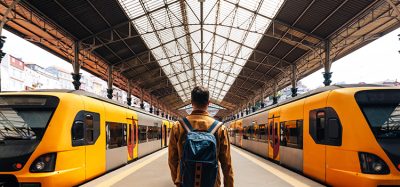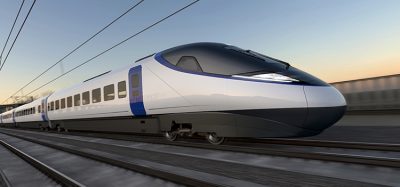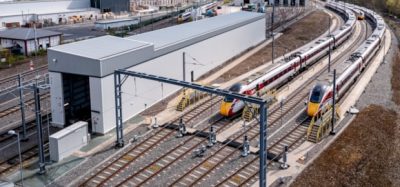Talent 2: the future of regional train design
Posted: 29 January 2008 | | No comments yet
In November 2007, at a spectacular ‘virtual launch’ event in Hennigsdorf, Germany, Bombardier presented its new Talent 2 to its customer, DB Regio. Attended by senior representatives from the industry and the region, the event heralded the inaugural call off of 42 Talent 2 regional trains from 321 ordered as part of a framework agreement concluded in February 2007. With a total contract value of approximately €1.2 billion, this is one of the largest orders in the history of Bombardier Transportation.
In November 2007, at a spectacular ‘virtual launch’ event in Hennigsdorf, Germany, Bombardier presented its new Talent 2 to its customer, DB Regio. Attended by senior representatives from the industry and the region, the event heralded the inaugural call off of 42 Talent 2 regional trains from 321 ordered as part of a framework agreement concluded in February 2007. With a total contract value of approximately €1.2 billion, this is one of the largest orders in the history of Bombardier Transportation.
In November 2007, at a spectacular ‘virtual launch’ event in Hennigsdorf, Germany, Bombardier presented its new Talent 2 to its customer, DB Regio.
Attended by senior representatives from the industry and the region, the event heralded the inaugural call off of 42 Talent 2 regional trains from 321 ordered as part of a framework agreement concluded in February 2007. With a total contract value of approximately €1.2 billion, this is one of the largest orders in the history of Bombardier Transportation.
From production to delivery
The first Talent 2 vehicles to roll off the production line are due to be delivered in May 2009, with service operation of the four-car units scheduled to commence in December 2010 on Nuremberg’s suburban rail network.
A second order from the framework agreement is anticipated shortly with 5×2 car units and 8×4 car units for use on the routes from Koblenz to Trier and Trier to Perl1.
Talent 2 differs significantly from the original ‘Talent’ train, but with only one real similarity: its credentials.
More than 750 trains of the Talent family are in service in Germany, Norway, Austria, Hungary and Canada and is a stronghold of regional and commuter services throughout Germany and Central Europe.
Several years in the making
Talent 2 is the result of several years of consultation, engineering development and research into customer requirements, undertaken by Bombardier, who worked closely with DB, as well as end-user focus groups, to understand their needs and those of other operators in Central Europe.
With an estimated 50% of rail routes to be tendered as franchises by 2015, German railways are becoming increasingly accessible to competition from private operators. This has a major impact on the fleets, with trains operating on specific services for a limited period only. Under the new regime, this could be a maximum of 12 to 15 years, or potentially as brief a period as six years. Given the 30-year typical lifetime of a train, to optimise use and residual value of the asset, this may require it to be used on four different routes – each with widely differing operating and passenger requirements.
Flexibility is a necessity
I must comment that the product cycle of a train is now much shorter than its life cycle, thus the modern market requires train concepts with the highest possible flexibility. For us, as a train manufacturer, this has necessitated a fundamentally different approach to vehicle design. To meet the evolving rail transportation challenges of the 21st century, we have completely changed the concept. With Talent 2, we have developed a train concept that can be easily modified to address new requirements and adapted to different operations, with minimal effort.
In developing the specification for Talent 2, the emphasis has been on flexibility and scalability of a modular concept, with the objective of satisfying all regional requirements, from those of frequently stopping S-Bahn type commuter services through to longer distance regional and interregional routes. In addition to catering for different options for vehicle configuration, traction performance and the number of entry and exit points has influenced interior design. For example, this influences standing versus seated capacity and also levels of comfort and facility provision. In the early stages of the evolution of Talent 2, estimates of approximately 250 possible variations might have seemed excessive, but I must now admit that this was more or less spot on! Experience was drawn from Bombardier’s aerospace division, where optimisation of space and adaptability are crucial.
Variable configurations
Of the 250 variations, the principal differences lie in train configuration, with the options of:
- 2 to 6 car units
- Vehicle entrance height (600 mm or 800 mm)
- Number of doors per side (1 or 2 sliding plug)
- Seat layout
- Toilet locations
- Disabled facilities
- Including multipurpose areas and buffet/catering modules
A further development is the introduction of the latest train control architecture, in the form of Bombardier’s MITRAC TCMS (Train Control Management System), which enables the transfer of information from wayside to train, enabling ‘real time’ updates in passenger information, including upcoming transfer advice. A further difference of Talent 2 from the original Talent is that all major systems are produced ‘in-house’ by Bombardier, including propulsion equipment.
Meeting Bombardier’s commitments
Vehicles can be adjusted to different voltage systems prevalent in the European rail network (15kv AC, 25kV AC, or 3kV DC). Furthermore, the train fits symbiotically with Bombardier’s commitment to sustainable mobility, with its modular concept being reusable, and a maximum proportion of materials recyclable. With a top speed of 160km/h, the Talent 2 is envisaged to be the future backbone of regional services in Germany and Central Europe, complementing Bombardier’s TRAXX locomotive and double-deck coaches platform, as well as the way forward for train-making technology in central Europe, contributing to flexibility, sustainability and accessibility.
References
- The Cottbus – Leipzig order.
About the author
Oliver Schmidt
Mr. Oliver Schmidt began his railway career in 1991, shortly after graduating from the Technical University of Berlin. He began working for Bombardier Transportation within the mass transit units, in engineering and tendering, sales and negotiation strategy and working as a Project Manager for the rolling stock of the Guangzhou Metro Line 1 in China. He then worked in a product management role for the light rail segment. His extensive career also includes project management and sales leadership with the Siemens Transportation Group, focusing on light rail vehicles and metros. Mid 2007, Mr. Schmidt returned to his roots at Bombardier Transportation and is currently working as the Vice President, Sales, for the “Sales North” region of the railway manufacturer at the division mainline and metros.







